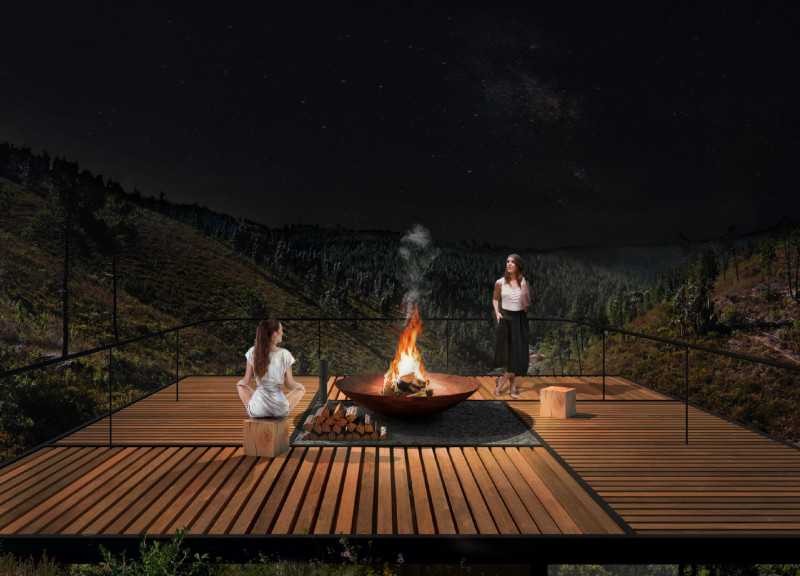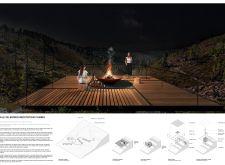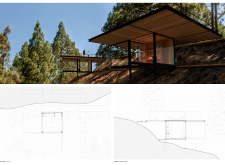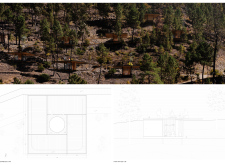5 key facts about this project
The Vale de Moses Meditation Cabins project is set in a distinctive natural landscape, designed to encourage reflection and tranquility. Its overall design concept focuses on creating a strong connection between the built environment and the surrounding nature. The architecture invites occupants to explore their inner selves while being present in the landscape around them.
Design Concept
The main idea behind the cabins is that observing nature allows for deeper self-reflection. This concept shapes the design, aiming to develop spaces that inspire contemplation and connection. A simple roof structure extends gracefully from the ravine, providing communal areas for gathering and offering shelters for individual retreats. This thoughtful arrangement balances the need for social interaction and personal solitude.
Spatial Arrangement
The layout features an internal circuit that organizes the cabins according to the natural shape of the ravine. Visitors move through two separate pathways—one for communal activities and the other leading privately to the cabins. This design creates a balance between shared experiences and moments of solitude, encouraging exploration of both the environment and personal reflection.
Sustainability Initiatives
Sustainability is a key focus of the design, with a strong emphasis on minimizing material and energy use. The building process is streamlined to avoid the need for specialized machinery, supporting eco-friendly practices in architecture. Mobile glazed panels form the boundary between the inside and outside, allowing flexibility in response to weather conditions while promoting natural light and airflow.
Energy and Water Infrastructure
The project includes a rainwater reservoir and a photovoltaic farm, establishing a self-supportive system for both water and energy needs. This thoughtful design not only supports environmental sustainability but also improves the functionality of the cabins, meeting user needs while respecting the natural landscape. The integration of these features highlights a commitment to environmental responsibility, creating a space that harmonizes with nature.
Each cabin expresses a clear relationship with its surroundings. The design emphasizes transitions between inside and outside, maintaining a balance that supports both comfort and connection to nature. Careful attention to detail—from the roof's design to the interaction of light within the spaces—illustrates a focus on providing a welcoming environment that enriches the experience of those who visit.























































